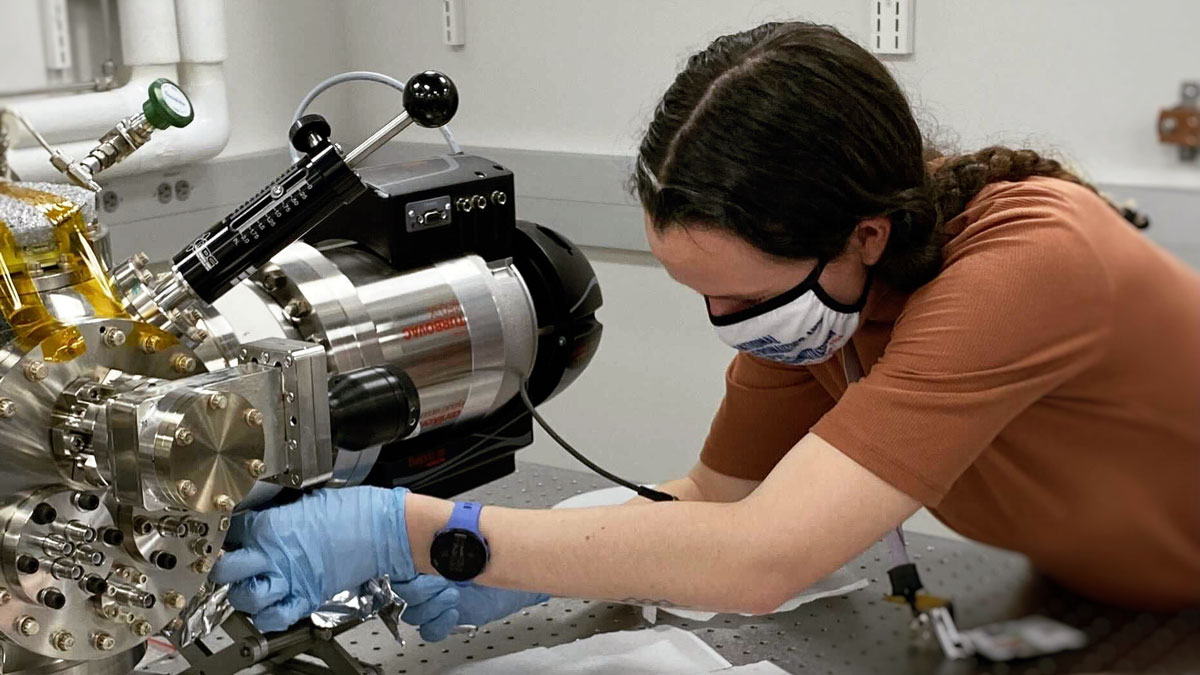From the liquid lakes of Titan to the icy plumes of Enceladus, the outer reaches of the solar system hold some of the most exciting targets in the search for extraterrestrial life. Unfortunately, science missions to these distant worlds have faced a significant obstacle: the need for more-compact, energy-efficient instruments. Now, thanks to a tiny new device, the hunt for extraterrestrial life might be entering a new phase.
In a recent study, researchers describe a miniature laser-based analyzer designed for future planetary missions. The pocket-sized instrument combines a pulsed ultraviolet laser and an Orbitrap—a mass analyzer traditionally used in commercial settings—to deliver high-resolution data about planetary chemistry and potential biosignatures.
Building on a Legacy
For decades, the questions of how life began on Earth and whether it exists elsewhere have motivated planetary missions and the development of increasingly sophisticated spacecraft instruments.
Nearly 50 years ago, Viking 1 and Viking 2 became NASA’s first spacecraft to search for life on another planet, with each mission conducting inconclusive soil experiments to detect microbes on Mars. Today, their latest successor, the Perseverance rover, continues these efforts on the Red Planet as it investigates Jezero crater.
In the decades since the Viking missions, astrobiology techniques have advanced dramatically. These developments have focused largely on identifying organics because carbon is an essential building block for life as we currently understand it.
“Taking something as powerful as the Orbitrap and putting it into a package that can actually be on a spaceflight mission is an incredible achievement.”
Like Viking 1 and 2, NASA’s Curiosity rover uses a technique called gas chromatography–mass spectrometry as part of its Sample Analysis at Mars tool to study organic compounds. Although Curiosity’s updated tool is gentler on materials, the method requires heating samples, risking the degradation of organics and a loss of molecular information.
To safely probe organic molecules, the new mini Orbitrap device uses a fundamentally different approach called laser desorption mass spectrometry (LDMS). Rather than heating molecules, LDMS applies a high-energy laser to remove tiny fragments of material, which are then analyzed using the miniaturized Orbitrap.
The analyzer’s resolution and accuracy are some of its unique strengths, said Lori Willhite, an author of the study and a Ph.D. candidate in geochemistry at the University of Maryland. Unlike other spectrometers used in spaceflight, the Orbitrap analyzer can differentiate between compounds that may share the same mass, making it an exceptional tool for the unambiguous detection of molecules, she explained. The combined analyzer and laser instrument weighs just over 17 pounds (8 kilograms), so it’s small enough to fit on a future spacecraft.
“Taking something as powerful as the Orbitrap and putting it into a package that can actually be on a spaceflight mission is an incredible achievement,” said Melissa Trainer, a planetary scientist at NASA Goddard Space Flight Center working on the Dragonfly mission to Titan. “It has been like a holy grail for spaceflight mass spectrometry for quite a while.” Trainer was not involved in the new study.
Although they have not yet arrived at their extraterrestrial destinations, other LDMS instruments have been developed for upcoming missions such as Dragonfly to evaluate the chemical components and potential biosignatures of their planetary targets.
“I would have loved to have it.”
This laser-based method, Trainer said, is extremely powerful because it allows scientists to look at really large molecules that could have come from life and to probe the surface without overheating or degrading it. The capacity to study complex molecules such as proteins gives scientists an advantage in the search for signs of life because they serve as more reliable biosignatures than smaller, simpler compounds.
At the time of the Dragonfly Mass Spectrometer’s design, the mini Orbitrap analyzer was still in development. “I would have loved to have it,” Trainer said.
Optimistic about the possibilities ahead, the team behind the mini Orbitrap LDMS aims for its instrument to venture to a planetary target within the next few years.
—Mackenzie White (@MackenzieMtn), Science Writer
Update, 2 March 2023: This article has been updated to clarify benefits of the laser.

